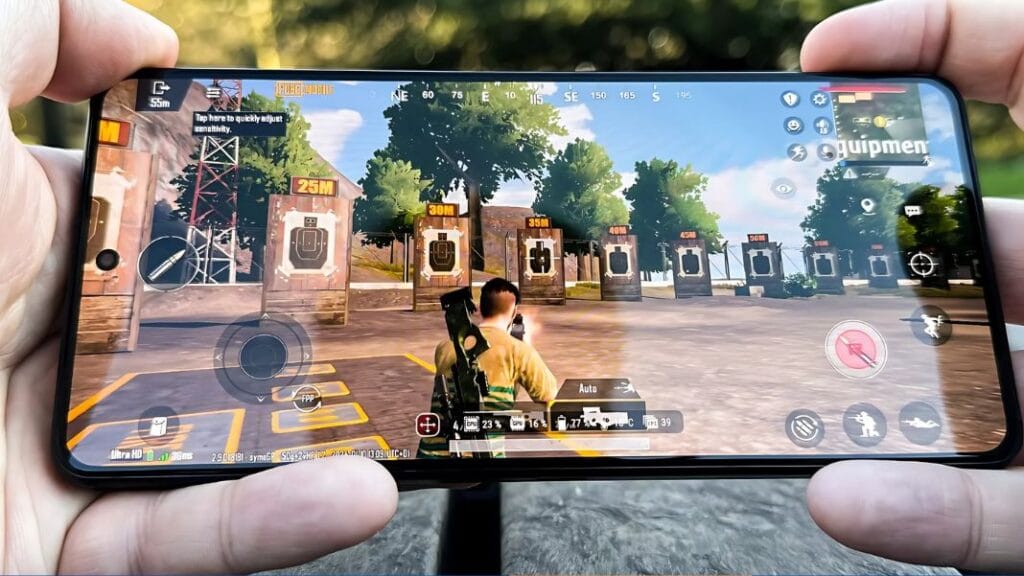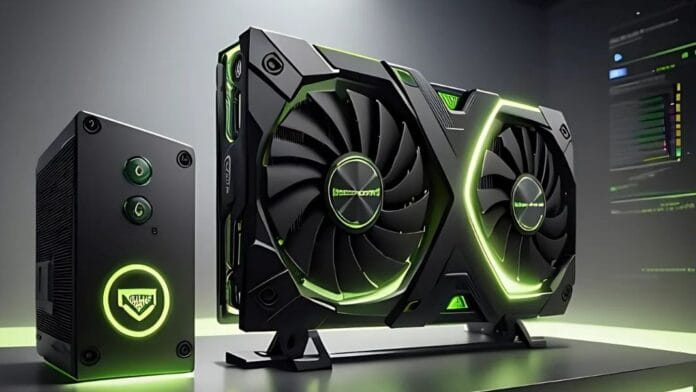I recently embarked on an exciting experiment that merges the raw power of desktop-level gaming with the portability of handheld consoles. The goal? To see how Nvidia’s groundbreaking Nvidia RTX 5090, the world’s fastest graphics card, performs in a handheld gaming PC. After testing this GPU in a compact form factor PC and experiencing its amazing performance, I was eager to see what it could do in a portable setup. What I discovered has me thrilled for the future of mobile gaming.
What Makes Nvidia RTX 5090 So Special?
Before we dive into the results, let’s first explore what makes the Nvidia RTX 5090 stand out. Nvidia designed the Nvidia RTX 5090 to redefine graphics performance and gaming immersion. With next-gen DLSS 3.0 support, the GPU offers smooth, responsive gaming experiences, even in graphically demanding titles.
In desktop setups, the Nvidia RTX 5090 handles 4K Ultra settings with ease, delivering frame rates above 100 FPS. Its advanced ray tracing and complex lighting effects are unmatched by most GPUs, especially in the mobile gaming world. But could this power translate into a portable handheld gaming device? I set out to find out.
The Experiment: Combining Power and Portability
For this test, I didn’t use just any handheld device. I paired the Nvidia RTX 5090 with an open-air external GPU setup using the $99 Minisforum DEG1. This device connects through the Oculink port, revolutionizing portable gaming by allowing desktop GPUs to work seamlessly with portable systems. The Oculink interface is becoming standard in high-end gaming laptops and portable PCs, enabling powerful GPUs like the RTX 5090 to integrate with mobile setups.
For the handheld device, I chose the GPD Win Max 2. This device features an AMD Ryzen 8840U mobile CPU, a step up from typical mobile processors, but still not as powerful as desktop CPUs. The Win Max 2 comes with 16GB of RAM, a 1TB SSD, and a 7-inch display with a 1200p resolution. Although not the highest available, it’s impressive for a handheld device.
The major limitation was the PCIe 4.0 connection, which offers only four lanes of bandwidth. The RTX 5090, however, is designed for PCIe 5.0 with 16 lanes, so this limitation kept the GPU from reaching its full potential in some scenarios. However, the RTX 5090 still delivered outstanding performance.
The Setup: Power and Cooling Challenges
To power this setup, I used an external 1000-watt power supply. The RTX 5090 needs far more power than a standard handheld battery can provide. Heat management also posed a challenge, as the Win Max 2 wasn’t built for the thermal output of a full desktop GPU. I monitored the temperatures closely during extended gaming sessions, but the external setup allowed for better cooling compared to an integrated GPU.
With everything in place, I powered on the Win Max 2, eager to test the performance of this impressive GPU in a portable device.
Performance: Desktop-Level Power in a Handheld Device
When I launched Cyberpunk 2077, one of the most demanding games out there, I expected the worst. The combination of a mobile CPU and limited PCIe bandwidth could easily throttle performance. However, I was pleasantly surprised.
At 4K resolution and Ultra settings, the RTX 5090 maintained over 100 FPS. This is remarkable, given the limitations of the mobile CPU and the reduced PCIe bandwidth. In fact, even many high-end gaming desktops can struggle to maintain 60 FPS in Cyberpunk 2077 at these settings. To see this portable setup deliver over 100 FPS at 4K in ultra settings proves the raw power of the RTX 5090.
Throughout my tests, the performance was consistently impressive. The handheld was between 7% and 47% slower than a full desktop gaming setup with an RTX 5090 and high-end desktop CPUs. However, it still outperformed the RTX 5090 in a small form factor desktop, which had previously been one of the most compact yet powerful gaming PCs. The handheld setup also delivered 4% to 29% better performance than an RTX 3080 desktop.
What really stood out was how much better this setup was compared to the Win Max 2’s integrated Radeon 780M GPU. The RTX 5090 outpaced it by 4 to 12 times. While the Win Max 2’s integrated graphics can barely handle modern titles at 1080p, the RTX 5090 turned it into a powerhouse capable of running demanding games at ultra settings.
Challenges and Limitations
Although the performance was impressive, the setup did have its challenges. The mobile CPU, the AMD Ryzen 8840U, performed well for everyday tasks and light gaming, but it couldn’t compete with the multi-core power of high-end desktop CPUs. As a result, CPU-intensive tasks like complex physics simulations and AI processing weren’t handled as smoothly as they would be on a desktop.
The PCIe 4.0 connection limited the GPU’s bandwidth, which kept the RTX 5090 from fully utilizing its potential. While performance was still impressive, the limited bandwidth meant that the GPU couldn’t shine in some of the more demanding tasks. Still, it was incredible to see it maintain 100 FPS in Cyberpunk 2077 despite these restrictions.
Heat management was another concern. The GPD Win Max 2 wasn’t built to handle the heat output of a full desktop GPU. With the external setup, cooling was more efficient than with an integrated GPU, but it was still something I had to monitor closely.
What This Means for the Future of Mobile Gaming

Image – Source
This experiment proved that we are on the cusp of a new era in mobile gaming. The RTX 5090’s performance in a handheld device was revolutionary. With the right hardware and connectivity, future handheld gaming PCs could run AAA games at 4K, even at ultra settings. We’re just getting started.
The gaming industry continues to innovate, and new GPUs are already being developed to balance power and energy efficiency. With technologies like PCIe 5.0, future handhelds could offer desktop-level gaming experiences. Imagine playing graphically intense games like Red Dead Redemption 2 or Horizon Zero Dawn in the palm of your hand while on the go. With further advancements in mobile hardware, that’s a reality just a few years away.
The Road Ahead: Challenges to Overcome
The road to widespread adoption of desktop-level GPUs in handheld devices is not without challenges. Power consumption remains a major issue, as the RTX 5090 demands a lot of power. Engineers must find ways to deliver power efficiently in portable devices.
Heat dissipation is another challenge. High-performance GPUs generate massive amounts of heat, and handheld devices need advanced cooling solutions. My external setup helped manage temperatures, but it’s not a perfect solution for mass-market products.
Cost is also a factor. Handheld devices with desktop-level performance come at a high price, and integrating powerful GPUs like the RTX 5090 would likely increase the cost. However, as technology advances and adoption grows, prices may come down, making these devices more accessible to gamers worldwide.
Conclusion: A New Era for Mobile Gaming
In conclusion, my experiment with the Nvidia RTX 5090 in a handheld gaming PCs has left me excited about the future of mobile gaming. We’re on the brink of a revolution where portable devices can handle the most graphically demanding games with ease, all while offering mobility and convenience. With advancements in hardware, connectivity, and cooling, the future of gaming could soon fit in the palm of your hand.
Featured Image – Source
